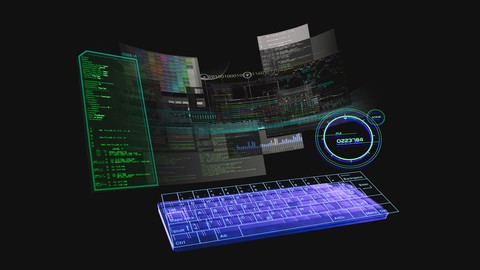Article authored by: Rashmi Prasad, Dean of the School of Business at Truman State University multi-dimensional
‘Education is not the learning of facts, but the training of the mind to think!’, said Albert Einstein.
Living in the VUCA environment, often described as volatile, uncertain, complex, and ambiguous, has strained the capacities of organizations and individuals, especially in the post-pandemic world. We need to look no further than the impact of the ongoing crisis due to the global pandemic on people, organizations, and systems across the world.

Important Announcement – EasyShiksha has now started Online Internship Program “Ab India Sikhega Ghar Se”

Adopting the multi-dimensional approaches to education will certainly help build the capacity in individuals to both endure and thrive in VUCA environments.
The multi-dimensional approach aims at educating the “head, heart, and hands.” Traditionally, education has focused mostly on the ‘head’, or cognitive dimension. However, multi-dimensional approaches focus on the cognitive, emotional, and social dimensions. IQ is fostered in conjunction with Emotional Intelligence (EQ), as well as the multiple intelligences identified in the pioneering work of Howard Gardner, including spatial, linguistic, and body-kinesthetic.
Shaping a student’s future
In a VUCA environment, career paths are going to require more pivoting than in the past. This involves navigating your way to new opportunities but also having some portable skills that you take with you as you move from, for example, working in the non-profit sector to the for-profit sector, or moving from one city to another.
Successful career patterns are increasingly ‘spiral’ form, that is, they involve transitions to different organizations and sectors while building on past experiences.
Top Software Engineering Courses
All of this requires a greater degree of psychological resilience, social skills, as well as, habits of lifelong learning, all of which are fostered in the multi-dimensional approach. Research by Anthony Carnevale indicated that graduates of liberal arts schools (a rough approximate to multi-dimensional education) had the highest earnings when measured over a 40-year career.
While multi-dimensional approaches benefit individuals, societies are the greatest beneficiaries by having leaders and professionals with values and a breadth of vision, to help solve complex challenges, such as those of development, sustainability, and social justice.
Key challenges and solutions
Education today, relies heavily on group collaboration, thoughtful mentoring from instructors, and high-impact learning experiences, all of which are organized through in-person learning. Achieving a digital equivalent of this experience is a creative challenge of a high order and is hard to accomplish overnight.
However, through necessity and experimentation, the entire education fraternity is learning to create collaborative experiences on digital platforms. For example, there are different technologies doing different functions; and one of them allows an instructor to track group collaboration more effectively and provide feedback to students regarding their teamwork skills. So as we emerge from the Pandemic, our traditional model of learning will see a sea-change and be enhanced by the innovative practices being discovered these days.
Empower your team. Lead the industry
Get a subscription to a library of online courses and digital learning tools for your organization with EasyShiksha
Request NowThe new practices/technologies in online/blended learning include developments of technology such as the deployment of web and cloud-based platforms and an increase in adoption of e-learning methods not just in the urban areas but in the rural rungs as well. As per, the e-learning market research report by Kilgore News Herald, the cloud segment in itself contributed to the lion’s share in 2020, holding more than three-fifths of the global e-learning market, as it enabled educators to upload vast quantities of e-learning content in various types and formats such as videos, texts, presentations, quizzes, and questionnaires.
Role of an instructor
The days of the ‘sage on the stage’ are ending. Instructors still must have deep disciplinary knowledge, but they are also thoughtful designers of the overall educational experience.
That is, they now must think at the level of the overall educational programme, not just the specialized courses that they teach. The role of academic advising for instructors is critical. Can they help students design a programme of study that integrates high-impact experiences, inter and multi-disciplinary thinking, and bridges a pathway to a student’s career?
For universities, the challenge is transitioning from educational silos based on discipline to a learning community or ecosystem whose design puts multi-dimensional learning at the center of the education system.
This transition is vital for the holistic development of a student, which can only come through realization and experience emanation while leading him/her to adopt multi-dimensional approaches to education. Educators need to adopt the technology in sync with the local context along with adjusted curriculum. This is critical for enabling effective engagement between students and teachers.
Most importantly, the institutions must implement support with remedial programmes for students in catching up with the time lost. These programmes should not just identify the areas in which students need more support, but also monitor students’ progress continually.
Missouri, US, adopted the approach way back in 2011
Any crisis is always an opportunity. For instance, when a tornado destroyed many of the buildings and physical assets of the school district in Joplin, Missouri in 2011, it accelerated the transition away from physical books into virtual learning resources with an investment in e-tools provided to all students, greatly expanding access to such resources for poorer students. In addition, the elimination of the four walls of the classroom, opened up the pedagogical tools beyond ‘chalk and talk’, to include team-based learning, experiential learning, and other approaches more conducive to experimentation and application.
This time definitely, the pandemic has taken a serious toll on all levels of education, especially at primary school levels. The IMF has estimated that the average days of lost schooling in 2020 were 15 for children in developed countries, 45.7 for Emerging Market nations, and 70 for low-income countries. This will decelerate the targets for Millennium Development Goals and global justice and equity for years to come. But it is important to look forward. The crisis has again given an opportunity for basic rethinking about the means and ends of education, building on multi-dimensional approaches, to steer the trajectory towards a much better future.
For information related to technology,visit: HawksCode and EasyShiksha
ALSO READ: Arch College of Design & Business as Knowledge Partner to
Get Course: Software-Testing-Tutorial-Course






































































